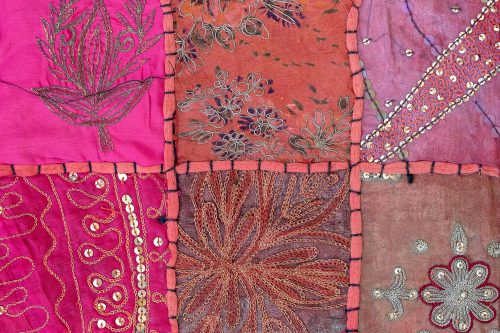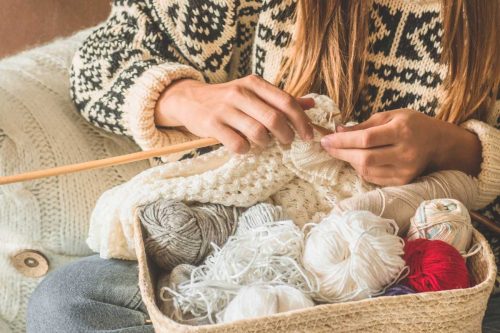Are you interested in making beaded jewelry? So many new and original variations of designs and patterns can be created using beads. It is essential to understand that the sizes of beads vary. Each bead size matters and can change the direction of a jewelry piece. Do not worry if you have no experience with bead sizes. We have done the research for you! Continue reading to find out more.
So, how do you know what size beads to buy for jewelry making? The answer is simple. Beads have many units of measurement.
Typical bead sizes can be measured in the following ways:
- Millimeters
- Inches
- Per Strand
The most common tool used to measure beads using the metric system is a caliper. Calipers are a measuring tool used to measure beads, the boreholes, jump rings, wire, and cord gauges. However, beads can also be measured by a ruler.
It is imperative to understand the different units of bead measurement when beginning to dive into jewelry making. It makes a difference when buying beads because the bead measurement is precise and therefore saves costs. Regardless of how you choose to measure the beads, understand it is time-saving! Read on for a step-by-step guide that explains how to measure your beads.

How to Measure Beads
Use a Ruler
The first thing to do when measuring beads would be to choose a measuring tool. Let us begin with a step by step for using a ruler to measure beads. Beading rulers are typically twelve inches and offer a bead diameter gauge that compares the diameter of beads from 2-20 millimeters.
Step 1: Purchase a beading ruler.
Check out the link here on Amazon.
This ruler is six inches long, but it offers a bead diameter gauge.
Step 2: Place the ruler from left to right with zero on the left side.
Step 3: Use a pencil and lay it perpendicular to the ruler on the left side to create a T-bone shape.
Step 4: Line up a maximum of 10 beads at the top of the ruler, starting at zero.
Step 5: Align the beads in a tight string between the pencil and ruler.
Step 6: Count the number of millimeters of the ten beads.
Step 7: Divide the result by ten!
Using a Caliper
Calipers are a very common tool to use when measuring beads. The great thing about calipers is that they have advanced from standard to digital.
Click here for the link on Amazon.
Step 1: Slide open the tips of the caliper.
Step 2: Place the tips against the outside of the bead
Step 3: Close the tips of the caliper down on the outside of the bead, tight
Step 4: Read the measurement that the digital reading displays!
By Millimeter
This is the most common way to measure beads. Because of the frequency of use, the caliper will instantly read the measurement of the bead or beads in millimeters.
By Inches
The great thing to remember is that one inch is equivalent to 25.4 millimeters. The way to convert the inches to millimeters is by multiplying the inches by 25.4. To convert millimeters to inches, multiply the millimeters by 0.03937.
Per Strand
Some beads found in stores are premeasured by strand. To estimate the number of beads per strand, you have to remember the conversion from inches to millimeters and vice versa.
Multiply the length of the strand of beads by 25.4 and divide the size of the beads in millimeters. Sometimes, it is worth looking into a bead per inch and beads per strand chart to how many strands of beads are required for a project. This gives you a better estimate of cost, quantity of beads required, and the size of beads.
Examples of Best Size Bead for Jewelry Pieces
There are various sizes of millimeter beads that can be specific to each piece of jewelry.
4-millimeter
4-millimeter size beads are great for small and delicate pieces of jewelry. These pieces include anklets, wrap bracelets, and lightweight necklaces. Larger stones like gemstones tend to be heavier and weigh down the piece.
6-millimeter
6-millimeter size beads are usually used in bracelets or necklaces. This is because the 6-millimeter size beads are larger than 4 millimeters and therefore stand out more as a statement.
8-millimeter
8-millimeter size beads are the ideal beads for bracelets. Once again, gemstones can be bulky and heavy. However, 8-millimeter beads are the perfect size to add character to bracelet pieces.
12-millimeter
12-millimeter size beads are the beads to use when creating necklaces. The neck is a stronger muscle than the wrist and therefore, can handle slightly heavier beads. Necklaces look great with bold pieces of jewelry.
14-millimeter
14-millimeter size beads are best used for accents in jewelry. Although you don't use them throughout the piece, they can complement smaller beads and create a new fun dynamic.
Seed Beads
Seed beads are not too different from regular beads. Except that their size is incredibly small! Seed beads often have cylinders or donut shapes. They are great for loom and off-loom bead weaving. Some artists use seed beads to fill in the gaps between larger beads in jewelry. They are often used in a simple string for embellishments.
Seed beads are a little harder to measure due to their small size. However, they can be measured in millimeters (mm) using a caliper or ruler, the same as regular size beads.
Some seed beads are classified by a number related to their size. The idea is that the smaller the number, the larger the bead. For example, a 6/0 seed bead is larger than a 13/0 seed bead.
Best Thread for Seed Beads
Seed beads are the smallest beads used for jewelry making. Because of this, there is a specific thread necessary for making seed bead creations. Below is an example of a seed bead thread that is commonly used by artists.
Beading Wire
What is beading wire? It is the material made up of thin steel wires woven together. Some beading wire is coated in a thin layer of nylon to protect and strengthen the wire's durability. Depending on the coating, the color can be clear or tinted to match the color scheme of the beads or gemstones chosen for a project.
Although beading wire is not specific to seed beads; however, the standard size of wire for seed beads can range from 0.010" through 0.15" in diameter. Large beads tend to use 0.24" through 0.036" wire.
Regardless if a bead is a seed bead or a large accent bead, the beading wire diameter needs to fit through the bead holes. It is essential to consider the diameter and strength of a piece.
Conclusion
Overall, there are several components to consider when beginning a beaded jewelry making project. To sum up, try to determine which unit of measurement you will use to measure your beads; millimeters, inches, or per strand. Each has its perks.
Next, remember to consider the tool you will be using to do the measuring. If you chose millimeters as your unit of measurement, the best choice for a tool would be the caliper or digital caliper.
Then, choose the type of jewelry you are interested in making. This determines the overall sizes of beads that are ideal to use in your project.
Finally, select the beading stringing wire that best compliments your beads.
Enjoy exploring the different sizes and uses for beads when jewelry making!









